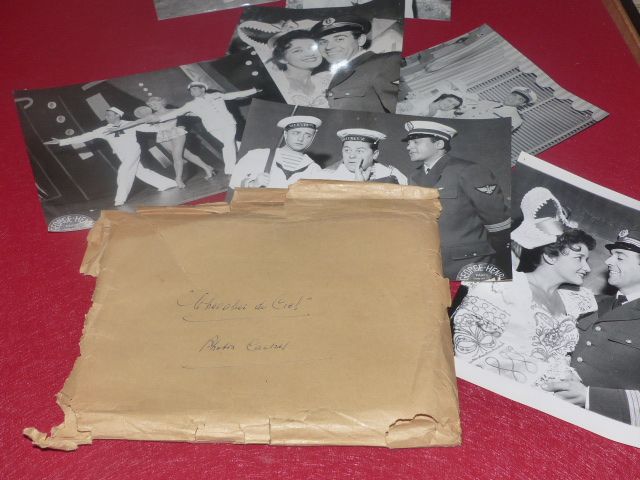Follow on ebay
at auction and in my shop "AmidesLivres"
a very nice set of rare photographs vintage argentique print
from the personal archives of
Germaine Roger
Cinema, Operetta, and of course a large number of photographs of the various shows of the
famous Théatre de la Gaîté-Lyrique which she directed after the war
Luis Mariano, André Dassary, Rudy Hirigoyen, Maurice Baquet, Francis Blanche,
the Compagnons de la Chanson, Claudine Cereda &c...&c..., and herself as an actress and opera singer
-
Germaine Roger
1910-1975
Victoria Calixte Bousquet, known as Germaine Roger, born February 12, 1910 in Marseille and died April 20, 1975 in Savigny-sur-Orge, was an operetta singer and theater director.
Biography
After winning a beauty contest in her hometown in 1929, she was admitted as a light soprano at the Marseille Conservatory, then made her debut in Paris at the Gaîté-Lyrique. It is then divided between the repertoire (Mam'zelle Nitouche) and creations by Albert Willemetz, Josef Szulc, Georges van Parys,
of Louis Beydts or Maurice Yvain.
She also began a career in the cinema and became the star of Vincent Scotto's operettas brought to the screen: three of the navy (1934), One of the Canebière (1938, where she notably performed The most beautiful tango in the world, in duet with Alibert), The Gangsters of the Chateau d'If (1939).
After the Second World War, Henri Montjoye (Henri Barbero, known as,
having kept the name carried during the Resistance)
and his wife Germaine Roger take the lead
from TGaité Lyrique theater.
After the death of her husband in 1950, she succeeded him alone as director until this Parisian temple of operetta was forced to close in 1964 for financial reasons.
As Director of the Théâtre de la Gaité Lyrique
many covers or creations of operettas to great success
followed: Colorado (1950 and 1959), The Land of Smiles (1951 and 1957), The Musketeers at the Convent (1952 and 1957), Three Waltzes (1952 and 1959), The Bells of Corneville (1953 and 1958), Mam' zelle Nitouche (1954 and 1960), Chanson Gitane, Andalousie, Pampanilla (1954), Chevalier du Ciel (1955), Minnie Mustache (1956), Romance au Portugal (new version of Portuguese Symphony (1958), Premier Rendez-vous (1959 ), La Chaste Suzanne (1960), Visa for Love (1961)
Works given with great casts: Luis Mariano, André Dassary, Rudy Hirigoyen, Jean Bretonnière, Les Compagnons de la chanson, Armand Mestral, Maurice Baquet, Rellys, Duvaleix, Annie Cordy, Germaine Roger, Andrée Grandjean, Gise Mey, Ginette Baudin…
-
[Source of information: the superb site Operette-theatremusical en]
SKY KNIGHT
Creation at the Théatre de la Gaîté-Lyrique
October 5, 1955
Operetta in 2 acts, music by Henri Bourtayre and Jacques-Henri Rys. Libretto by Paul Hill. Directed by Jean-Henri Duval. Choreography by Mary-Jo Weldon. Decorations by Raymond Fost. Musical direction, Maurice Darnell
Premiered in Paris, Théâtre de la Gaité-Lyrique on October 5, 1955.
With: Claudine Céréda (Marilyn), Lucie Dolène (Anne-Marie), Ginette ARTHAUD (mother of Anne-Marie),
Lyna PrettyValentine
Luis Mariano (Jean-Louis d'Ascain), Francis Blanche (Panette), Jean-Paul Thomas (Dulure),
René Novan (Georghiu Papescu), Henri Despuech (Alexandre Manolescu), Maurice Bruot (Captain Broussac), Christian Asse (Magnali)
.
Very Beautiful Photography
Large format
24 x 18.5cm
Lucie DOLENE
1955
Vintage argentique print
Vintage
Photograph by LIPNITZKI
Test signed at the bottom right
Photographer's stamp on the back
Format (approximately) H 24 x W 18.5 cm.
Very good condition, clean
very minor miscellaneous usual rubbing on edges or corners
see visuals...
rare document
-
As always, combined shipping costs in the event of the purchase of several books or documents...

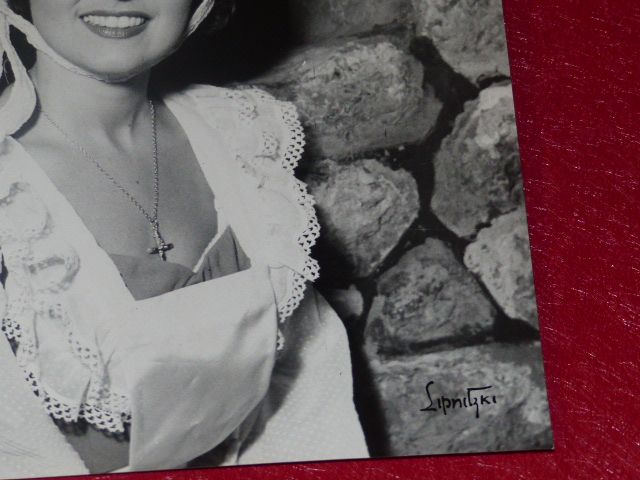
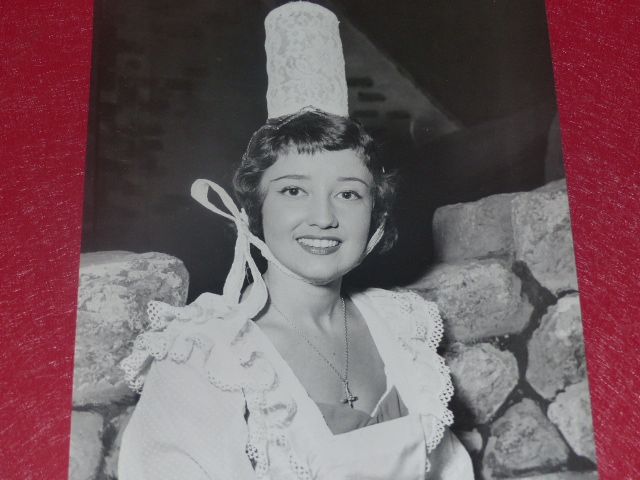
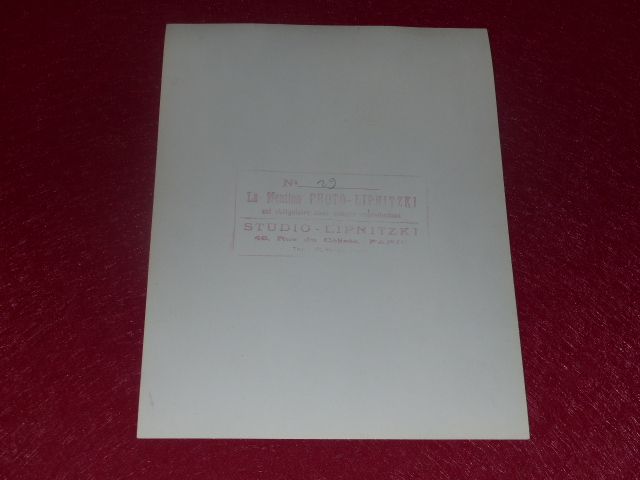
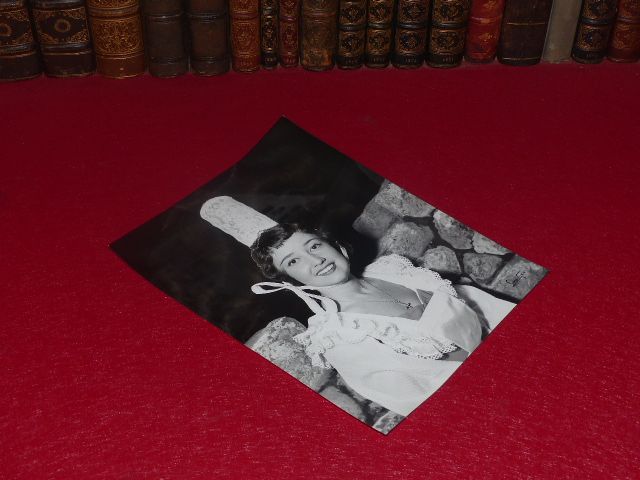
SKY KNIGHT
Henri Bourtayre and Jacques-Henri Rys
-
During and after his triumph in Le Chanteur de Mexico, which he performed for about a year at the Châtelet, from December 15, 1951, (Rudy Hirigoyen then took over the role), Luis Mariano made several films: Violettes Impériales (1952), La Belle from Cadiz (1953), The Adventurer of Seville (1953), The Tzarevich (1954), Four Days in Paris (1955). It will therefore be necessary to wait until October 5, 1955 for us to find him on a Parisian stage, La Gaîté-Lyrique, where he had already experienced, in 1947, one of his greatest successes: Andalousie.
On October 5, 1955, it was with Chevalier du Ciel that Luis Mariano made his comeback in Paris. For this work, he abandoned the “espananades” of his previous performances. He will do it again a little later with Visa pour l'amour before returning to Spain or Portugal and its splendor of yesteryear (Le Prince de Madrid, La Caravelle d'Or).
It was Henri Bourtayre and Jacques-Henri Rys who were in charge of the score, very much in the style of the time. We will remember in particular “Alone”, “And everything and everything”, “La Valse des amours” and “Mon bonheur s'enfui”.
The book was highly publicized. A novel by Mariano was even published. The rehearsals were not easy, says Joëlle Montserrat, the director Jacques-Henri Duval having had to ask the author, Paul Colline, for modifications to the libretto. Despite the efforts of decorator Raymond Fost, from Mariano, who took dance lessons, the result did not live up to the expectations of the protagonists.
Francis Blanche, in the role of Panette, had demanded “five comic effects guaranteed”. In addition he added a little too much: he appeared in the most diverse transvestites, brandishing a sign "I love Mariano", or knitting an endless sock... This made the public laugh, but Mariano after some time expressed his displeasure. The author Paul Colline, for his part, even went so far as to prosecute the fanciful artist.
We can estimate between 270 and 330 the number of performances of this work.
Chevalier du Ciel was not given in regions.
I. The plot
The aircraft carrier "Le Valeureux" is about to leave Toulon for a secret mission. Two spies, Gheorgiu and Alexandre, interrogate the sailors Panette and Dulure without result. As the ship Vogue towards Honolulu, Captain Broussac and Lieutenant Jean-Louis wonder about the identity of the mysterious agent who is trying to seize the plans for the latest prototype planes.
In Honolulu, during a reception, Jean-Louis meets billionaire Marilyn. She invites Jean-Louis on her yacht. The JEUNE man sensitive to the beauty's charm does not resist. In reality, Marilyn is an ambitious model hired by the spies. It is in Tahiti that the latter have planned to accomplish their package. But they recognize Panette and Dulure disguised as butlers and charged with flushing them out. Recognized, they have just enough time to flee, taking Marylin with them, without Jean-Louis suspecting her duplicity.
Return to France. During a test flight in Brittany, Jean-Louis' plane caught fire. Injured, he wakes up in the hospital where he is pampered by the nurses. He learns that he was saved by the pretty Anne-Marie. A sweet feeling seizes the two young people, but Marylin's arrival scares Anne-Marie away. Feeling ousted, the spy warns Gheorgiu who is responsible for intercepting any correspondence between the little Breton and the airman.
We are now in Fort-de-France. Jean-Louis, by a forged letter, learns of the marriage of Anne-Marie and a Breton peasant. Events rush: Jean-Louis and his plane are captured; released, he will in turn set a trap for bandits who will be taken prisoner by the police. Marylin, despite her efforts, will not be able to soften Jean-Louis. Anne-Marie's real letters are recovered and the JEUNE man immediately flies off to join his beauty. The bells ring for the wedding of Jean-Louis and Anne-Marie.
Sources
(1) Luis Mariano by Joëlle Montserrat (PAC, 1984)
(2) Saint-Luis by Christophe Mirambeau (Flammarion, 2004)
(3) Luis Mariano, the Prince of Light by Daniel Ringold (Ed. TF1, 1995)
(4) History of operetta in France by Florian Bruyas (Emmanuel Vitte, Lyon)
II. The score (main tunes)
Opening
Chorus: “Here are the knights of heaven
“Alone” (Jean-Louis)
"In Honolulu"
“My paradises” (Jean-Louis)
"And everything, and everything" (Marylin, Jean-Louis)
“And here is the result” (Marylin, Jean-Louis, Paul Mattei)
Set of nurses "I don't feel like it"
The Legend of the Knight (Anne-Marie)
“I have said so often I love you” (Jean-Louis, Anne Marie)
"The Waltz of Love" (Jean-Louis)
“Palace Song” (Marylin)
"My happiness has fled" (Jean-Louis)
“Pagan prayer” (Jean-Louis and chorus)
“Without your love” (Jean-Louis)
Chorus “Bing, Beng, bell chimes” and finale “Les chevaliers du ciel”
Discography
– LP 25 cms (Pathe FLEP 323)
– CD set Marianne Mélodie 081879
– CD EMI 094635007824, 11 extracts supplemented by a bonus of 10 songs
